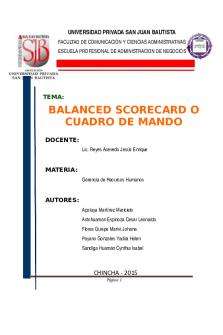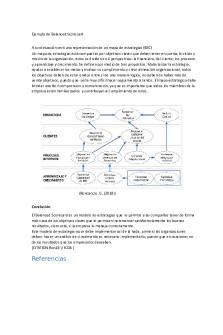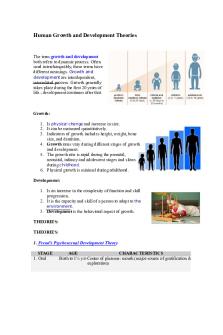Balanced & Unbalanced Growth Theories PDF

| Title | Balanced & Unbalanced Growth Theories |
|---|---|
| Author | SHRESTHA AGRAWAL 1940830 |
| Course | Economics |
| Institution | Christ (Deemed To Be University) |
| Pages | 7 |
| File Size | 123.8 KB |
| File Type | |
| Total Downloads | 9 |
| Total Views | 142 |
Summary
Its notes on growth theories...
Description
execution of various development projects, there are possibilities for the revision of original plans, delays and departures from the original time frame. 6. Jacob Viner has pointed out indivisibilities, or external economies, generally result in reducing the cost rather than expanding the output. In a development theory, expansion of output is as important as the reduction of cost. The theory should have explained both the aspects of development. It, however, explains the cost-reduction aspect and ignores the aspect of output expansion. 7. J. H. Adler has criticized the theory on the ground that it ignores the importance of small investment. His statistical analysis of economic development reveals that a relatively low level of investment pays off well in the form of additional investment. The possibility of small push has not been explored by Rodan.
3.6: THE DOCTRINE OF BALANCED GROWTH Western economists like Ragnar Nurkse, Arthur Lewis, Allyn young, Rosenstein Rodan have advocated the strategy of balanced growth for the underdeveloped countries. Balanced growth implies growth in every kind of capital stock. It refers to full employment, a high level of investment, overall growth in productive capacity and equilibrium. It aims at investment in the depressed sector. Balanced growth can occur when the growth rates of consumption, investment and income are equal to each other. This can be expressed as: C I Y C I Y
According to R.F Harrod, balanced growth requires equality between growth rate of income (Gy) growth rate of output (Gw) and growth rate of natural resources (Gn). This can be expressed as: Gy = Gw = Gn Mrs. Joan Robinson’s concept of ‘golden age’ also implies balanced growth. The golden age is characterized by the equality between growth rates of capital (ΔK/K) and labour (ΔN/N). The theory of balanced growth, according to Prof. Nurkse, is a true summation of the idea of vicious circle of poverty. On the supply side, there is small capacity to save due to low level of
income. The low level of income is a reflection of low productivity, which in its turn is due to alack of capital. The lack of capital is a result of small capacity to save. Thus, the vicious circle is complete. On the demand side, inducement to invest may be low because of small purchasing power of the people, which is due to their small real income, which again is due to low productivity. Low productivity may be due to small amount of capital used in production, which in turn may be due to a small inducement to invest. Again, the operation of vicious circle is complete. The best way to break this vicious circle of poverty is through the application of capital over a wide range of activities which raises the general level of economic efficiency and size of the market is enlarged. The doctrine of Balanced Growth calls for a balance between different sectors of the economy, i.e., a balance between agriculture and industry. Both sectors should be interdependent in their needs and expansion of the manufacturing industries should help the development of agriculture and vice versa. Planners should not concentrate on resources for the development of one particular sector of the economy at the expense of the other sector. While drawing up the pattern of priorities, the planners should take into account the local conditions such as availability of resources, level of technological development institutional factors, level of development already attained and similar other factors. This doctrine also calls for a balance between investment in human capital and investment in material capital. These capacities should be enhanced continuously and simultaneously to raise the level of national output, which is the centrifugal force of economic development. Economic development implies both capital formation and skill formation. There should also be a balance between the domestic sector and foreign sector. The underdeveloped countries should reshape their foreign trade policy to meet the requirements of their development. They should adopt restrictive trade policies to protect themselves against the world marks fluctuations. The government of underdeveloped countries should make consistent and earnest efforts to earn as much foreign exchange as possible by promoting exports and reducing imports. Restrictions must be imposed on the import of luxury goods. Money saved on these accounts should be used for domestic investment.
However, a few essential conditions for balance growth are: (i) state intervention (ii) formulation and implementation of plans (iii) coordination among the different departments of the government (iv) cooperation between people and government. The various advantages of balanced growth are: (i) balanced regional development, (ii) wide extent of the market, (iii) division of labour, (iv) external economies, (v) creation of social overhead capital, (vi) innovations and researches, and (vii) modern technological development.
3.7: THE DOCTRINE OF UNBALANCED GROWTH Prof. Albert Hirschman has propounded the theory of unbalanced growth in his look “Strategy of Economic Development”. It was further supported by H.W. Singer, C.P Kindleberger, Paul Streeten and W.W. Rostow. According to Hirschman, imbalances and tensions should be created in an economy for attaining accelerated economic development. The best way to creates imbalances and tensions is to assign top priority to the leading sectors in the matter of development. Prof. Alok Ghosh explains the concept of unbalanced growth with stress on the planning period investment and income at a rate higher than consumption. This definition explains the concept of unbalanced growth in terms of growth rates of investment, income and consumption. If
,
and
denote the growth rates of investment, income and consumption respectively,
then unbalanced growth implies:
. In other words, these three growth rates should
not be uniform. Prof. Rostow has explained the concept of unbalanced growth in terms of the conditions of takeoff. Take-off refers to the time interval during which growth of the economy becomes selfpropelling or automatic and for that the following conditions are essential. (a) The rate of the productive investment should be raised from 5 per cent or less to 10 per cent or more of the national income.
(b) The productive investment must be made for the development of the leading sectors of the economy. According to Hirschman, the series of investment can be of two types: (1) convergent series of investment and (2) divergent series of investment. The convergent series of investment are made in the Directly Productive Activities (DPA) and divergent series of investment are made on Social Overhead Capital (SOO). According to Hirschman, SOC refers to “those basic services without which primary, secondary and tertiary productive activities can not function”. The expansion of basic services through the investment in SOC is an essential condition for encouraging and stimulating the private investment in DPA. Some SOC investment is required as a prerequisite for DPA investment. This sequence of investment (from SOC to DPA) is called the “pressure relieving investment” or “development via excess capacity of SOC”. Another strategy of the doctrine to unbalance the economy is shortage of SOC, which may raise the cost of production and price level as well. Increase in price level may create uncertainty and unfavourable climate for fresh investments in DPA. In this way, the process of development may be hampered. As such pressures and tensions will arise during the course of development. The sequence of investment (from DPA to SOC) is called “pressure creating investment” or “development via shortage of SOC”. The doctrine of unbalanced growth create advantages like the creation of economies, selfreliance, generation of economic surplus, skill formation, short-term strategy, practical policy, better use of resources, expansion of social overhead capital and rapid industrialization.
3.8: BALANCED VERSUS UNBALANCED GROWTH (NURKSE VERSUS HIRSCHMAN THESIS) Having discussed the two strategies, it would be worthwhile to have a comparative study of balanced and unbalanced growth. The main points of difference are as follows: 1. Balanced growth aims at simultaneous development of all the sectors of the economy, whereas unbalanced growth suggests development of only the leading and growing sectors.
2. Balanced growth aims at harmony, consistency and balances in the growth rates of various sectors, whereas unbalanced growth suggests creation of disharmony, inconsistency and imbalance in the growth rates of development parameters. 3. The implementation of balanced growth requires huge capital investment for the simultaneous development of various sectors. The implementation of unbalanced growth requires relatively less capital as only leading sectors are developed in the first instance. 4. Balanced growth is a long term strategy as the development of different sectors is possible in the long period. The objectives of balanced growth are difficult to be realised in the short period because of stress and strain in the early stages of development. But, the unbalanced growth is a relatively short term strategy, as the development of leading sectors is possible in the short period. 5. The doctrine of balanced growth assumes that the bottlenecks in the form of shortages are fairly widespread in the economy and as such, it suggests the policy of frontal attack for minimization and elimination of bottlenecks. Unbalanced growth, on the other hand, assumes that bottlenecks are not widely spread in the economy. 6. The balanced growth theory assumes that supply of production factors is elastic, the condition so essential for simultaneous expansion of various sectors. The unbalanced growth doctrine assumes that supply of production factors is inelastic in some sectors and elastic in others, thus warranting investment in the sectors with elastic supply conditions. 7. Another difference between balanced and unbalanced growth doctrine is that the former assumes that all sector generate external economies whereas, the latter assumes that some sectors generate larger external economies than the other. Of course, there are certain points of similarities between the two strategies. These are as follows: First, both the strategies believe in the existence of a private enterprise system based on market mechanism under which they operate. At the same time, they imply operation of state planning. Second, both ignore the role of supply limitations and supply inelasticities. Third, both the doctrines assume interdependence, but of different degrees. Under balanced growth, development of one sector is dependent on that of the other sectors. On the other hand,
under unbalanced growth, the economy gradually moves on the path of economic development via tensions, disproportions and disequilibria, and ultimately reaches balanced growth. Reconciliation: The controversy between balanced and unbalanced growth has been stretched too far and has become almost barren. Keeping in view the scarcity of resources in a developing country, the best course is to adopt the strategy of unbalanced growth. Under this strategy, social overhead capital should be developed first and this would encourage subsequent investments in directly productive activities, when the economy will ultimately move on the path to balanced growth. The experience of many developing countries like India reveals that if social overhead capital such as power, irrigation, manpower, transpor t, etc. are developed first, development of agriculture, industry and commerce is retarded.
3.9: SINGER'S CRITIQUE OF BALANCED GROWTH MODEL Sir H.W. Singer, a strong supporter of unbalanced growth strategy has criticized the theory of balanced growth on several grounds. The main points of Singer’s critique of balanced growth are as follows: According to Singer, balanced growth strategy is beyond the capabilities of underdeveloped countries. Simultaneous development of different sectors requires lumpiness of capital and it is difficult for the less developed countries to mobilize necessary capital investment in the early stages of development. Also in the underdeveloped countries, supply of other resources like infrastructure, trained labour, research and development, etc. are also inadequate to support balanced growth. Moreover, inadequacy of essential resources leads to wastages and
the
optimum allocation of resources becomes difficult. The whole doctrine thus appears to be a contradiction in itself. In this context Singer argues, “Perhaps guerilla tactics are more suitable for the circumstances of underdeveloped countries than a frontal attack”. It is generally presumed that under the balanced growth model, capital lumpiness is needed for simultaneous development of social and economic overheads. The experience of many developed countries, however, shows that many over heads can be built up at low costs. For example, electricity can be generated through thermal plants, nuclear plants and diesel generating sets rather than building huge dam on a river. The generation of electricity by the first process
may entail low cost as compared to the second process. Moreover, capital lumpiness is not needed if labour-intensive techniques are adopted in the initial stages for promoting development. H. W. Singer has aptly remarked in this context , “Think-Big, is a sound advice to underdeveloped countries but ‘Act-Big’ is unwise counsel if it spurs them to do more than their resources permit”. Launching of balanced growth in the underdeveloped countries is just like asking a weak person to take a long jump. If a weak person ventures to take a long jump, he may get his legs or arms fractured. Similarly, if an underdeveloped country launches ambitious programme of balanced growth with limited resources, then imbalances, tensions and disequilibrium may emerge and it might be difficult to maintain balance among different sectors. It is worthwhile again to quote Singer again, “The advantages of multiple developments may make interesting reading for economists, but they are gloomy news indeed for underdeveloped countries. The initial resources for simultaneous developments on many fronts are generally lacking”. H. W. Singer believes that the doctrine of balanced growth is based on the assumption of zero development, i.e., underdeveloped countries start their development process from scratch. This logic appears to be unconvincing. The underdeveloped economies start their development from a stage of low but not zero development. Even if it may be presumed that development starts from zero level, then priority would be accorded to the most strategic sectors. In that case, other sectors would not receive equal priority and the strategy of balanced growth would be defeated. Thus, we may conclude in the words of H.W. Singer, “The doctrine of balanced growth is premature rather than wrong in the since that it is applicable to subsequent stages of sustained growth rather than to the breaking of deadlock”.
3.10: SUMMARY A large number of development strategies have been put forwarded by the economists to solve the problems of the underdeveloped countries trapped in the vicious circle of poverty. In this chapter we discussed some important and popular strategies. We started with Lewis model of unlimited of labour supplies that focused on the structural transformation of the primary subsistence economy. Then we proceeded to understand the critical minimum effort thesis,...
Similar Free PDFs

Human Growth Summary of Theories
- 3 Pages

Balanced Score Card
- 24 Pages

Perspectives in Balanced Scorecard
- 11 Pages

Starbucks Balanced Scorecard
- 12 Pages

Tugas BALANCED SCORECARD
- 13 Pages

Amazon balanced score card
- 3 Pages

MAKALAH BALANCED SCORECARD
- 10 Pages

WAL-MART\'S Balanced Scorecard
- 2 Pages

Cumulative Balanced Scorecard 3
- 3 Pages

Ejemplo de Balanced Scorecard
- 2 Pages

Atypical Growth
- 1 Pages
Popular Institutions
- Tinajero National High School - Annex
- Politeknik Caltex Riau
- Yokohama City University
- SGT University
- University of Al-Qadisiyah
- Divine Word College of Vigan
- Techniek College Rotterdam
- Universidade de Santiago
- Universiti Teknologi MARA Cawangan Johor Kampus Pasir Gudang
- Poltekkes Kemenkes Yogyakarta
- Baguio City National High School
- Colegio san marcos
- preparatoria uno
- Centro de Bachillerato Tecnológico Industrial y de Servicios No. 107
- Dalian Maritime University
- Quang Trung Secondary School
- Colegio Tecnológico en Informática
- Corporación Regional de Educación Superior
- Grupo CEDVA
- Dar Al Uloom University
- Centro de Estudios Preuniversitarios de la Universidad Nacional de Ingeniería
- 上智大学
- Aakash International School, Nuna Majara
- San Felipe Neri Catholic School
- Kang Chiao International School - New Taipei City
- Misamis Occidental National High School
- Institución Educativa Escuela Normal Juan Ladrilleros
- Kolehiyo ng Pantukan
- Batanes State College
- Instituto Continental
- Sekolah Menengah Kejuruan Kesehatan Kaltara (Tarakan)
- Colegio de La Inmaculada Concepcion - Cebu




